Watercress
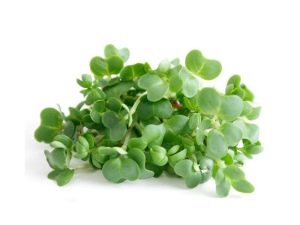
Watercress, which in our country is also called "sowing bug" - is an edible plant from the Cabbage class. The names of this type of salad in other languages sound like this:
- German - Pfefferkraut, Tellerkresse;
- English - garden cress, peppergrass;
- French - cresson alénois, nasitort.
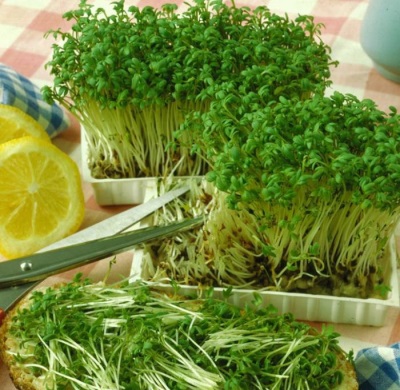
Kinds
There are several types of watercress, including:
- sowing;
- whole-leaved;
- curly;
- garden.
Watercress also includes these herbs:
- pepper;
- crap;
- tsitsmat.
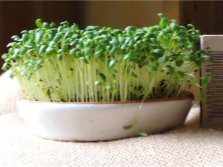
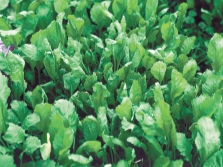
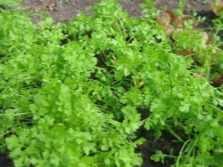
Appearance
Watercress is a herbaceous plant about half a meter tall. Leaves of two types: lower, basal - pinnate, and upper - oval. The flowers are small, white or light pink. Seeds ripen in pods.
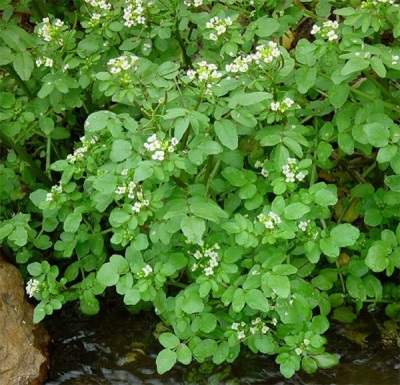
Where does it grow?
Iran is considered the birthplace of watercress, but this spicy herb has long been cultivated and is successfully grown in household plots throughout Europe. In the wild, this plant can be found in some regions of Asia and Africa.
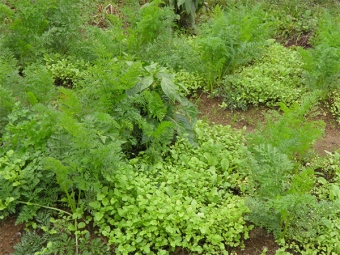
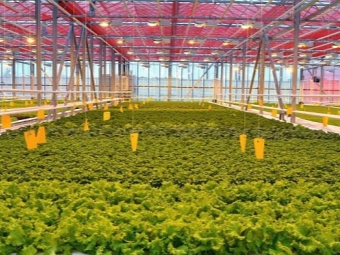
Characteristics
- dark green color;
- bitter taste;
- spicy, fresh scent.
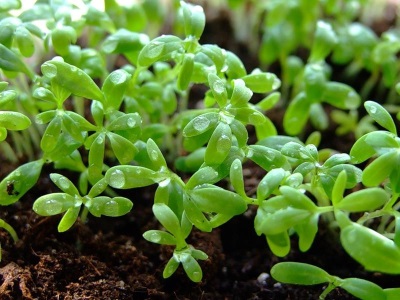
Where and how to choose?
Watercress, like any other greens, can be bought at the market or in the grocery store.
When buying, pay special attention to the color and condition of the leaves. They should be a dark shade of green, fresh and juicy. Withered watercress has already lost most of its taste and smell.
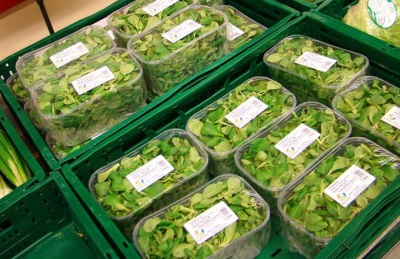
Nutritional value and calories
Nutritional value and calorie content per 100 grams of product
| Squirrels | Fats | Carbohydrates | calories |
|---|---|---|---|
| 2.6 gr. | 0.7 gr. | 6 gr. | 32 kcal |
You can learn more about watercress from the video.
Chemical composition
Chemical composition of 100 grams of fresh watercress
| vitamins | Macro- and microelements | ||
|---|---|---|---|
| beta carotene | 4.15 mg | Calcium | 81 mg |
| A (RE) | 346 mcg | Magnesium | 38 mg |
| B1 (thiamine) | 0.08 mg | Sodium | 14 mg |
| B2 (riboflavin) | 0.26 mg | Potassium | 606 mg |
| B3 (pantothenic) | 0.242 mg | Phosphorus | 76 mg |
| B6 (pyridoxine) | 0.247 mg | Iron | 1.3 mg |
| B9 (folic) | 80 mcg | Zinc | 0.23 mg |
| C | 69 mg | Copper | 170 mcg |
| E (TE) | 0.7 mg | Manganese | 0.553 mg |
| K (phylloquinone) | 541.9 mcg | Selenium | 0.9 µg |
| PP (Niacin equivalent) | 1 mg | ||
| Choline | 19.5 mg |
Beneficial features
- is a valuable source of vitamins and minerals;
- fights cancer cells
- has a diuretic effect;
- considered a natural aphrodisiac;
- has an antioxidant effect;
- beneficial effect on the condition of the skin;
- able to relieve swelling;
- has a bactericidal effect;
- produces a wound healing effect;
- strengthens the immune system;
- normalizes blood pressure;
- good effect on the endocrine system;
- strengthens the nervous system;
- has an anti-inflammatory effect;
- supports eye health.
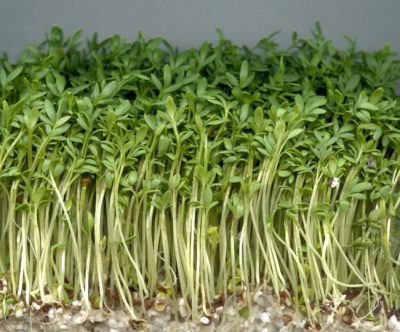
You can learn more about the beneficial properties of watercress in the following video of the program "About the most important thing."
Harm
- Watercress should not be consumed in large quantities daily, as this adversely affects the health of the digestive system.
- It is quite a sharp herb, so people suffering from stomach diseases should refrain from eating it.
- Watercress can cause an allergic reaction that can cause redness and itching of the skin.
- For those who have problems with urination or high blood pressure, it is not recommended to eat too much of it.
Oil
Watercress seeds are used to make oil, which has a number of useful properties. If you take it orally, a few drops every day, you can increase your sexual activity, as well as cure some diseases of the genitourinary system. Applying watercress oil to the scalp helps boost hair growth. Also, this drug helps to fight skin inflammation.
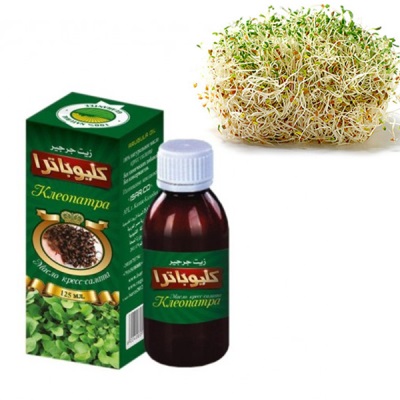
Juice
Traditional medicine recommends using fresh watercress juice to relieve inflammation and treat various skin conditions. The juice of this plant is an essential component of many folk recipes for the treatment of prostatitis and mastopathy. In addition, it can help you get rid of dandruff.
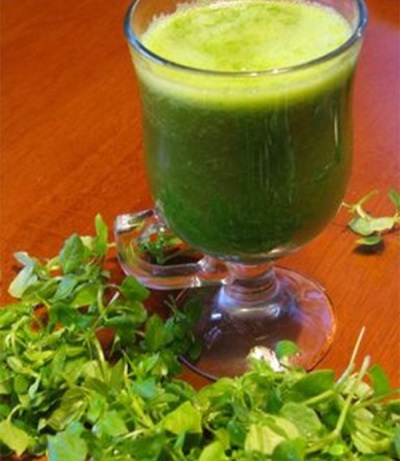
Application
In cooking
- traditionally, watercress is added to salads made from fresh herbs and vegetables;
- this spicy herb well sets off the taste of meat and fish;
- soups, sandwiches and omelettes are decorated with leaves;
- with its use prepare spicy sauces;
- it goes well with cottage cheese, cheese and eggs;
- watercress is consumed only fresh, as dried herbs lose all their taste and aroma.
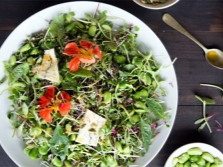
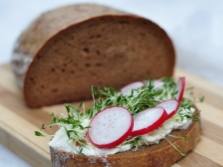
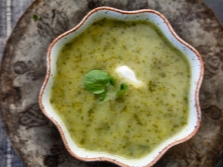
mustard sauce
Finely chop 2 shallots and sauté in a pan with butter until softened. Pour in 60 ml of dry white wine and boil until the liquid is almost completely evaporated. Remove the pan from the stove, put a glass of sour cream in it, 3 tbsp. grainy mustard, 2 tbsp. Dijon mustard. Chop a bunch of lettuce and a few wild garlic leaves. Add herbs to the sauce, salt and pepper to taste.
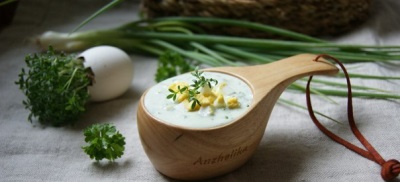
Stuffed eggs
Hard boil 6 eggs. Cool in cold water, peel and cut lengthwise into 2 halves. Take out the yolks, put them in a separate bowl. Mash the yolks with a fork. Chop a few sprigs of dill and a small bunch of watercress.150 g radishes finely chopped or grated on a coarse grater. Pour the greens into the yolks, add 50 g of sour cream, 1 tbsp. Dijon mustard, salt and hot pepper to taste. Stir the mixture thoroughly and stuff the egg halves with it.
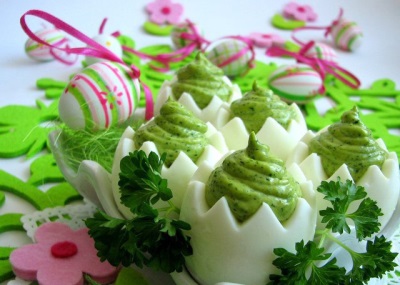
In medicine
In folk medicine, watercress, due to its medicinal properties, is used as an aid in the fight against the following diseases:
- digestive disorders;
- intestinal parasites;
- respiratory diseases;
- acute respiratory diseases;
- cough;
- avitaminosis;
- fever;
- anemia;
- scabies;
- wounds, cuts and burns;
- indigestion;
- problematic skin - pimples and acne;
- cancerous diseases;
- osteoporosis;
- problems with potency in men;
- disorders of the thyroid gland.
For weight loss
Watercress is a very low-calorie product, so it can be safely included in any, even the most strict diet. In addition, it is able to improve the digestive process, which also helps to get rid of excess weight.
cultivation
For cooking and treatment, it is best to use a completely fresh plant, literally just plucked from the garden.
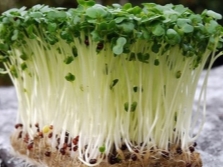
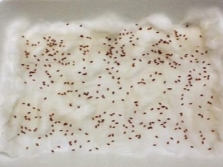
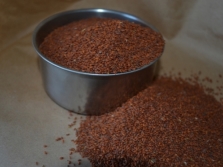
Growing watercress at home or in your garden is not at all difficult, you just need to follow simple recommendations:
- Watercress is best sown in early spring, just after the snow has melted. But winter varieties can be planted before the onset of cold weather.
- The plant loves the shade, so try to choose a suitable place for it in your garden.
- The land for sowing should be prepared in the fall: clear of weeds, dig and fertilize.
- Seeds should be planted in shallow grooves.The distance between grown plants should be about 5-10 cm.
- A couple of weeks after planting, you can already harvest the first crop.
- Seedlings must be provided with sufficient water. If the weather is hot, you need to water the beds every day.
- From time to time, the soil should be loosened and fed with mineral fertilizer.
About growing watercress, watch the following video of the program "Hour at the Cottage".
Interesting Facts
- Watercress seeds steamed in hot water can be used instead of mustard plasters.
- In some African countries, watercress is grown to feed farm animals, including camels.


















I want to grow watercress on the windowsill! Both beautiful and useful